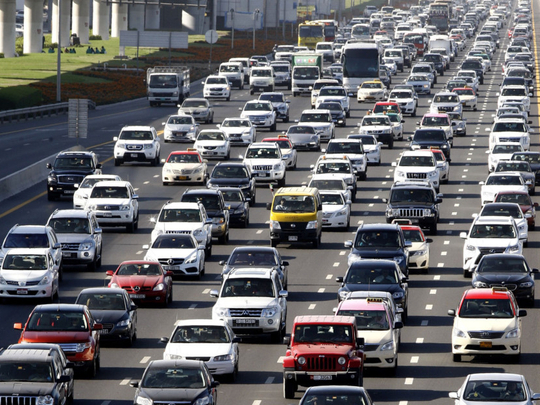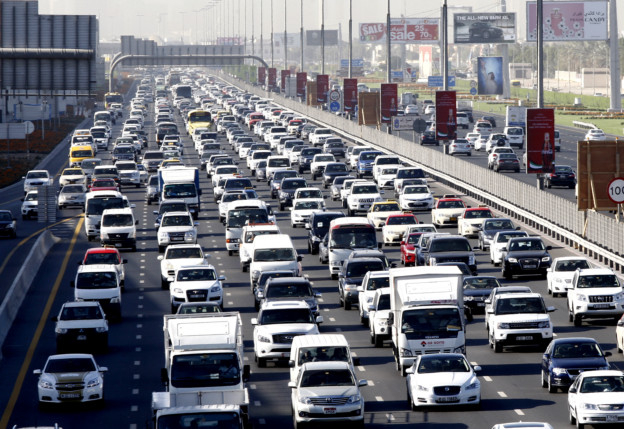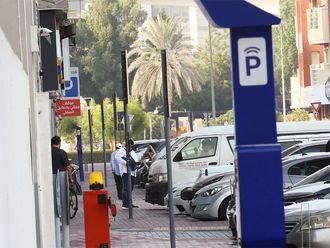
Dubai: Peak hour traffic at various locations in Dubai brings back memories of the last decade when the city witnessed heavy congestion.
Apart from the areas traditionally known for traffic snarls, newer areas in the south of the city are also witnessing gridlocks.
Greens, Discovery Gardens, Tecom, Springs, Hessa Street and First Al Khail Road have become new no-go zones during both morning and evening peak hours due to heavy traffic.
Morning traffic on Shaikh Zayed Road, on either side, is also returning to the peak levels of the last decade.
“It used to take me 30 minutes from Tecom to Al Wasl Road in the morning just a few months ago. Now it takes more than an hour. It seems suddenly there are more vehicles on the roads,” said Nancy Rogers, a Tecom resident who works as a therapist on Al Wasl Road.
First Al Khail Road and Hessa Street, where most traffic from the Springs, Greens, Meadows and Tecom converge before heading to Shaikh Zayed Road, have become congested over the last few months.
“Hessa street from First Al Khail road leading all the way to Shaikh Zayed Road is completely blocked between 8am and 9.30am. Traffic can be seen as far as the eyes can see on either side of Shaikh Zayed Road. Nobody can tell what’s wrong,” said Anas Zaidan, a resident of Greens.
Entry and exit to and from Discovery Gardens have also become equally bad.
“Both getting out and entering Discovery Gardens has become a nightmare. The situation is worsening every passing and authorities need to come up with additional exits and entries to ease the situation,” said Suraj singh, a resident of Discovery Gardens.
Elsewhere, the situation in traditionally busy areas has further deteriorated with regular tailbacks in Shindagha Tunnel, Al Wasl Road, Al Khail Road, Oud Metha Road, Business Bay, Ittihad Road and Mohammad Bin Zayed Road.
No amount of infrastructure development and expansion of road networks seems to be sufficient with the rate at which traffic on Dubai roads is growing.
With 1.4 million vehicles registered in Dubai, there is more than one car per person on the roads, which could be one of the key reasons behind the increase in traffic congestions.
More than 100,000 vehicles have been added to Dubai roads this year, up from 1.3 million vehicles registered at the end of last year.
Apart from building roads, RTA has also worked on other ways to improve the situation, including development of a world-class public transport system which includes a sprawling network of Dubai Metro and Dubai Tram, as well as introducing a toll system to ease traffic on key roads.
Ironically, although the number of public transport users has increased with the Metro growing in popularity, the number of motorists has also gone up.
With the economy improving and the population of Dubai growing at a rapid pace, experts have suggested introducing legislation to restrict use of cars.
Gulf News reported earlier this year that a proposal to hike annual registration fees of vehicles is currently being studied as one of the ways to dissuade people from buying cars. Another proposal is to set a minimum income limit for eligibility to buy a car.
Road networks in Dubai have increased by 50 per cent since 2005, reaching 12,454 lane kilometers (if a road is 8km long and has four lanes, the lane kilometre adds up to 32) in 2014 from 8,715 lane/km.
Improved road networks over the last eight years have resulted in a benefit of Dh73 billion to Dubai’s economy through savings in time and fuel.
However, if the current situation is not addressed soon, all the gains could soon be erased.
There was no comment from the Roads and Transport Authority on the current traffic situation.













